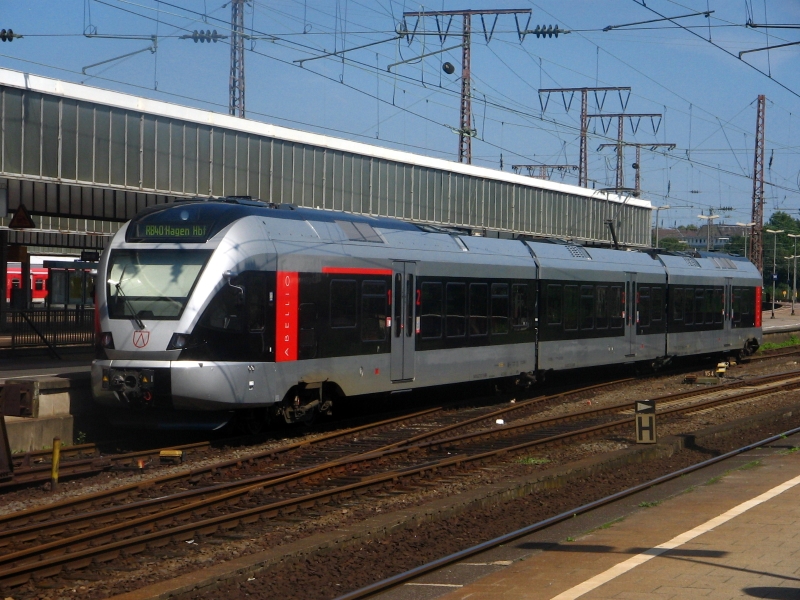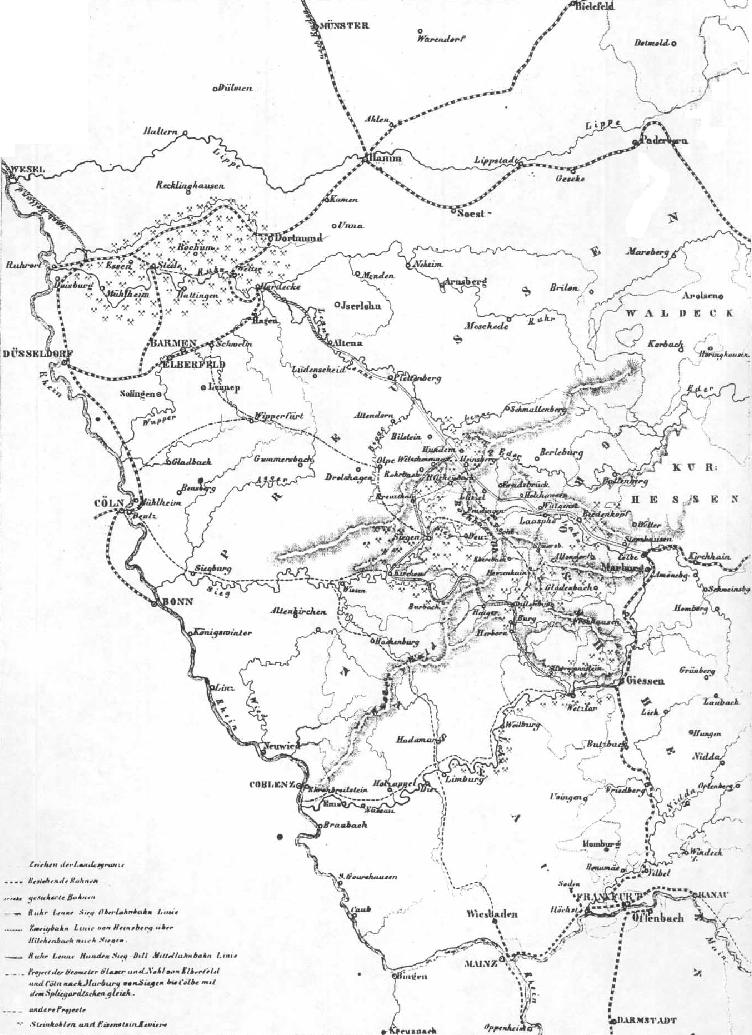|
Ruhr-Lenne-Express
The Ruhr-Lenne-Express (RE 16) is a Regional-Express service in the German state of North Rhine-Westphalia, running from Essen via Bochum, Witten, Bochum, Hagen and Iserlohn-Letmathe to . It is operated by DB Regio NRW hourly. History In the summer of 2001, DB Reise&Touristik abandoned InterRegio line 22, which ran from Frankfurt on the Ruhr–Sieg railway to Düsseldorf (until the summer of 1999 to Münster), continuing once a day to Norddeich Mole). The RE 16 (''Ruhr-Sieg-Express'') service was established to replace it from the timetable change of 10 June 2001 by the transport association of the Rhine-Ruhr, Ruhr-Lippe and Westfalen-Süd. The newly created service ran initially via Siegen to Au (Sieg); this branch was taken over in December 2002 by the RB 95 ( Sieg-Dill-Bahn) service operated by Deutsche Bahn and operated since December 2004 under the brand name of DreiLänderBahn. In 2004, the operations of the RE 16 was tendered together with the RB 40 (''Ruhr-Lenne ... [...More Info...] [...Related Items...] OR: [Wikipedia] [Google] [Baidu] |
Wattenscheid Station
Wattenscheid station is on the Witten/Dortmund–Oberhausen/Duisburg railway. It is one of two stations in the formerly independent city of Wattenscheid, now a district of the city of Bochum in the German state of North Rhine-Westphalia. The other station is Wattenscheid-Höntrop. In late 2007, Wattenscheid station was downgraded to a ''Haltepunkt'' (literally “halt”, meaning that it is not a rail junction and has no sets of points). It is located just south of central Wattenscheid, next to the A 40 autobahn on the western edge of an industrial area. History A station named Wattenscheid has been at this location since 1874. It was on a line of the Bergisch-Märkische Railway Company (''Bergisch-Märkische Eisenbahn-Gesellschaft'', BME), which was nationalised in 1882. The current station building dates from 1956. The station at that time had more than ten tracks and was one of two rail terminals of the Fröhliche Morgensonne mine. A few hundred metres to the west lies ... [...More Info...] [...Related Items...] OR: [Wikipedia] [Google] [Baidu] |
Witten Hauptbahnhof
Witten Hauptbahnhof is a railway station in the town of Witten in western Germany. It is situated southwest of the town. In 1849 the station was opened as ''Witten West'' by the '' Bergisch-Märkische Eisenbahn-Gesellschaft''. At the end of the 19th century the whole station was reconstructed, the new station building was designed by the architect Richard Witten Sauerbruch and opened in 1901. It is now part of The Industrial Heritage Trail (german: Route Industriekultur). In 1940 the station was renamed ''Witten Hauptbahnhof''. History Witten station was originally built as part of the Elberfeld–Dortmund trunk line of the Bergisch-Märkische Railway Company, which was opened on 20 December 1848, originally only for freight. On 26 October 1860, the BME began building its Ruhr route from this station. Deutsche Reichsbahn opened a freight rail line through Witten-Höhe to Wengern Ost connecting with the Ruhr Valley Railway on 4 October 1926. In Witten-Höhe, the Witten–Wen ... [...More Info...] [...Related Items...] OR: [Wikipedia] [Google] [Baidu] |
Hohenlimburg Station
Hagen-Hohenlimburg station is the only station in the Hohenlimburg district of Hagen in the German state of North Rhine-Westphalia. It is on the Ruhr–Sieg railway and classified by Deutsche Bahn as a category 5 station. Location The station is located on the edge of central Hohenlimburg. Directly across the street is the bus station, which is the starting point of bus services of the ''Hagener Straßenbahn'' and ''Märkische Verkehrsgesellschaft'' companies towards central Hagen, Iserlohn, Hemer and Nachrodt-Wiblingwerde. At the end of the platform there was a level crossing, which, however, has been replaced by a new bridge. History Until well into the 20th century the station was of great importance to the steel industry in Hohenlimburg. In the past the Hohenlimburg Light Railway (german: Hohenlimburger Kleinbahn) connected the textile and wire-making factories in the valley of the Nahmerbach to the station. It ceased operations in 1983. Until a few years ago there wa ... [...More Info...] [...Related Items...] OR: [Wikipedia] [Google] [Baidu] |
Iserlohn Station
Iserlohn station is located in central Iserlohn in the German state of North Rhine-Westphalia. It is at the end of two single-track lines, the Ardey Railway (''Ardeybahn'') from Dortmund and Schwerte and the line from Iserlohn-Letmathe with services from Essen via Hagen. Since 2008, it has operated from a rebuilt station called the ''Stadtbahnhof'' (city station). History Iserlohn station was opened in 1864, together with the line from Letmathe, which was extended to Hemer in 1885, connecting to Fröndenberg. In 1910 the Ardey Railway to Schwerte was added. In 1966, the old station building was replaced by a new building. The Letmathe–Fröndenberg railway between Iserlohn Ost station and Hemer was closed in 1989 because of the deterioration of a bridge on the line, which was not considered worth repairing. The line between Iserlohn and Iserlohn Ost was still used by freight trains up to 1995. Since the dismantling of the line and the removal of the last set of points, Iser ... [...More Info...] [...Related Items...] OR: [Wikipedia] [Google] [Baidu] |
Ruhr–Sieg Railway
The Ruhr–Sieg railway is a 106 km long double-track, electrified main line from Hagen to Siegen via Iserlohn-Letmathe, Finnentrop and Kreuztal in the German state of North Rhine-Westphalia. The line, which has many tunnels, runs primarily through the valley of the Lenne. South of Altenhundem it crosses the watershed between the Lenne and the Sieg. The line was opened between 1859 and 1861 and is one of the oldest railways in Germany. History In 1835 a committee was established in Siegen to promote the construction of a horse-drawn railway from Siegen to the Ruhr. The goal was better and faster transport of coal from the Ruhr for smelting in the Siegen area. Iron production in the Siegen country was very important for Prussia. It produced over 23 percent of the country’s total pig iron production and 85 percent of its crude steel production. During the lengthy approval process, the committee, which was based in Hagen from 1851, changed the proposal to a steam railway, ... [...More Info...] [...Related Items...] OR: [Wikipedia] [Google] [Baidu] |
Bochum Hauptbahnhof
Bochum Hauptbahnhof is a railway station for the city of Bochum in western Germany. In its current incarnation, it was built from 1955 to 1957 and is one of the most notable 1950s railway stations in Germany. The station underwent extensive remodeling and modernisation from 2004 to 2006 and was officially reopened on 29 May 2006. History The old station was opened in 1860 as the Bochum station of the Bergisch-Märkische Railway Company as part of its Witten/Dortmund–Oberhausen/Duisburg railway opened between 1860 and 1862, which was the first line built through the city of Bochum. It was located on the south-western edge of the historic centre, in the northern part of the emerging city of Bochum-Ehrenfeld, and was well-located near the important heavy industries such as the steel mills of Bochumer Verein and various collieries. Access to the station for passengers was not ideal and the space was inadequate for the increasing volume of traffic and was constrained by the construc ... [...More Info...] [...Related Items...] OR: [Wikipedia] [Google] [Baidu] |
Wetter (Ruhr) Station
Wetter (Ruhr) station is in the district of Vorhalle in the centre of the city Wetter (Ruhr) in the German state of North Rhine-Westphalia. It is served by regional services and Rhine-Ruhr S-Bahn line S 5. History The station is located on the Elberfeld–Dortmund line and was opened on 9 March 1849 as a through station by the Bergisch-Märkische Railway Company. The original station building, which was built in 1850, was demolished by the Prussian state railways and replaced by the existing building in 1905. On 17 March 1920 there was fighting at the station during the Ruhr Uprising, between units of the Ruhr Red Army and a vanguard of the Freikorps Lichtschlag, in response to the Kapp Putsch. A plaque commemorates the events. In 1994, line S 5 services of the Rhine-Ruhr S-Bahn began operating on the line through the station and regional service N 33 was discontinued. Today the station building is no longer used by the railway. Instead the city library has been located h ... [...More Info...] [...Related Items...] OR: [Wikipedia] [Google] [Baidu] |
Werdohl Station
Werdohl station is the passenger station of the town of Werdohl in the German state of North Rhine-Westphalia. It lies on the Ruhr–Sieg railway, running from Hagen to Siegen and was opened in 1861 with the commissioning of the line. From 1887 to 1955 Werdohl was also the terminus of a narrow-gauge railway line to Lüdenscheid operated by the Altena District Railway (''Kreis Altenaer Eisenbahn''). Since the end of December 2012 Werdohl station is also a stop on the Sauerland-Höhenflug hiking trail. Remodeling of the station building A neo-baroque entrance building with two storeys was built in 1914. It is now a monument on the ''Märkische Straße Technischer Kulturdenkmäler'' (“ Märkische technical heritage road”). Since July 2011, the station has been extensively renovated by the Werdohl municipality. The renovation is expected to cost a total of around €2.3 million. In addition, the main entrance is currently being modified to provide barrier-free access. Rail s ... [...More Info...] [...Related Items...] OR: [Wikipedia] [Google] [Baidu] |
DB Regio
DB Regio AG is a subsidiary of Deutsche Bahn which operates regional and commuter train services in Germany. DB Regio AG, headquartered in Frankfurt am Main. It is a 100% subsidiary of the Deutsche Bahn Group and there part of the DB Regio business segment, which also includes DB Regionnetz Verkehrs GmbH and other independent subsidiaries. The company as a mainly nationwide operational company is responsible for all regional transport activities (rail and bus) of the DB Group in Germany. This includes traffic in neighboring countries. For the maintenance of the vehicle fleet, the company operates its own workshops. The company serves 310 lines with 22,800 trains and 295,000 stops every day. It has about ten million customers. History The DB Regio AG emerged in the course of the second stage of the rail reform on January 1, 1999, from the local transport division of Deutsche Bahn AG. Original plans were for them to be listed on the stock exchange by 2003. An IPO has not yet ... [...More Info...] [...Related Items...] OR: [Wikipedia] [Google] [Baidu] |
Weidenau (Siegen)
Siegen () is a city in Germany, in the south Westphalian part of North Rhine-Westphalia. It is located in the district of Siegen-Wittgenstein in the Arnsberg region. The university town (nearly 20,000 students in the 2018–2019 winter semester) is the district seat, and is ranked as a "higher centre" in the South Westphalian urban agglomeration. In 1975, municipal reforms and amalgamations lifted Siegen's population above the 100,000 mark. Geography Location The city of Siegen lies in the basin of the upper reaches of the river Sieg. From there, lateral valleys branch off in many directions. The heights of the surrounding mountains, wherever they are not actually settled, are covered in coppice. To the north lies the Sauerland, to the northwest the Rothaargebirge and to the southwest the Westerwald. The nearest cities to Siegen, taking into account average travelling distances, are Hagen to the north , Frankfurt am Main to the southeast , Koblenz to the southwest and Colog ... [...More Info...] [...Related Items...] OR: [Wikipedia] [Google] [Baidu] |






